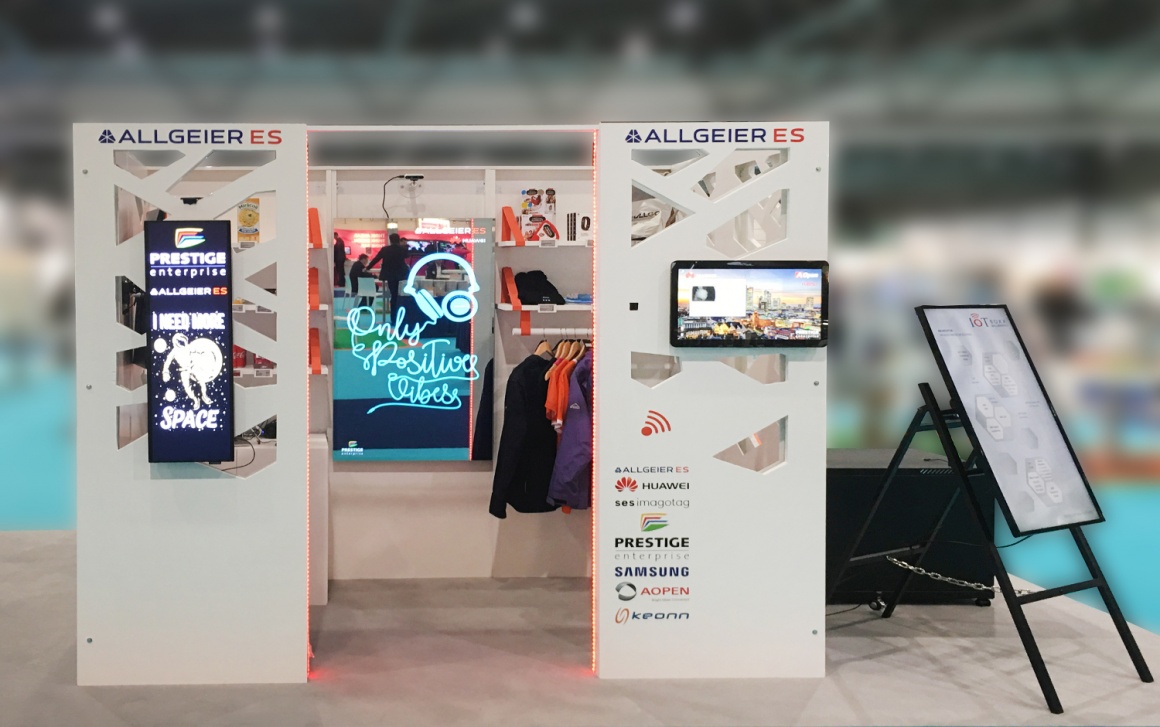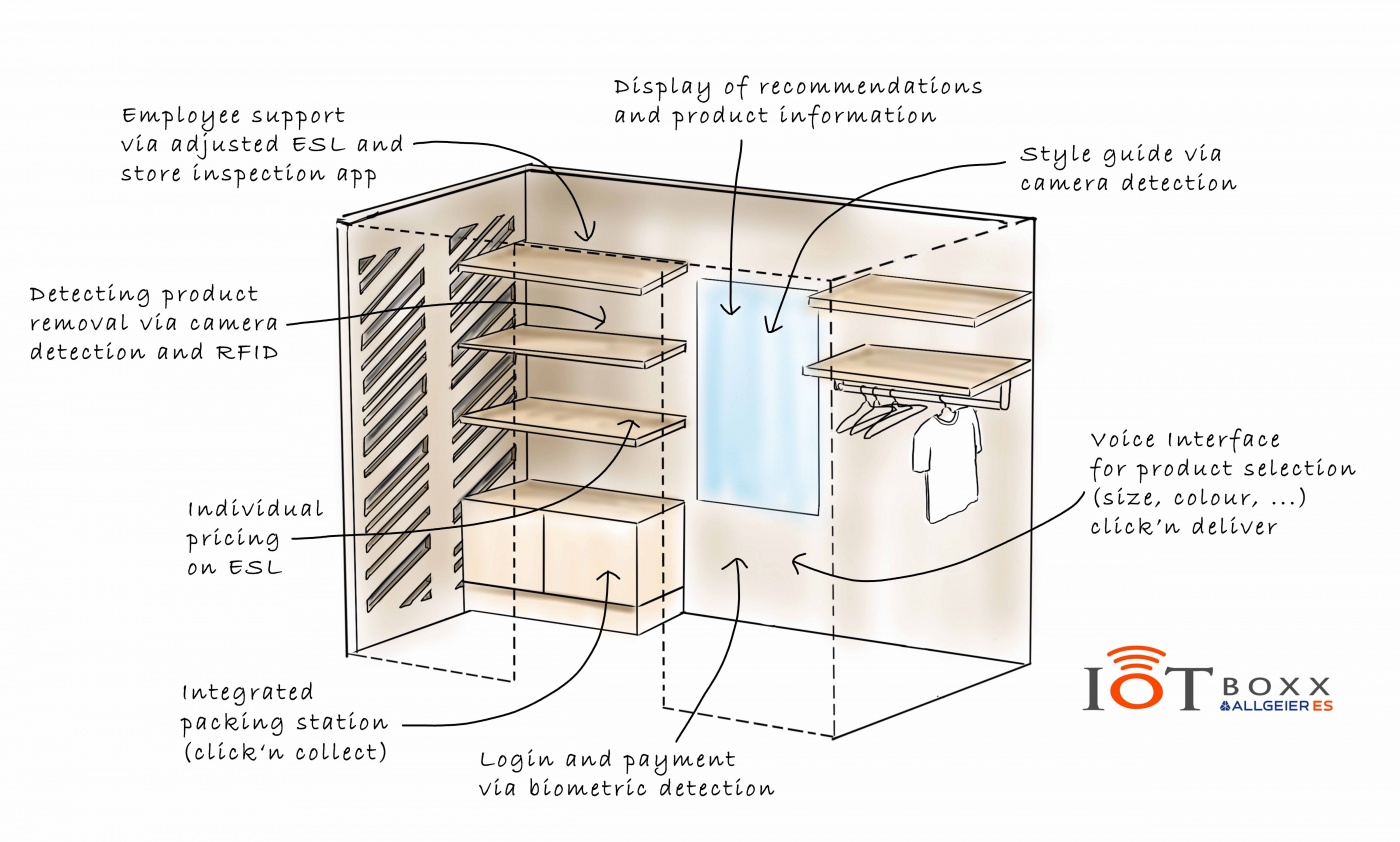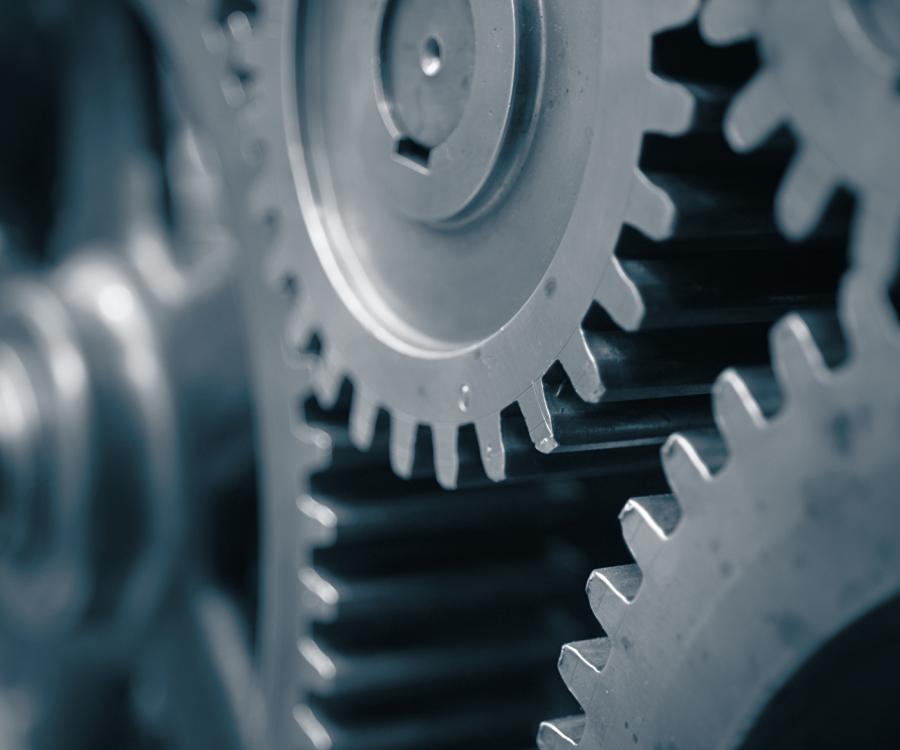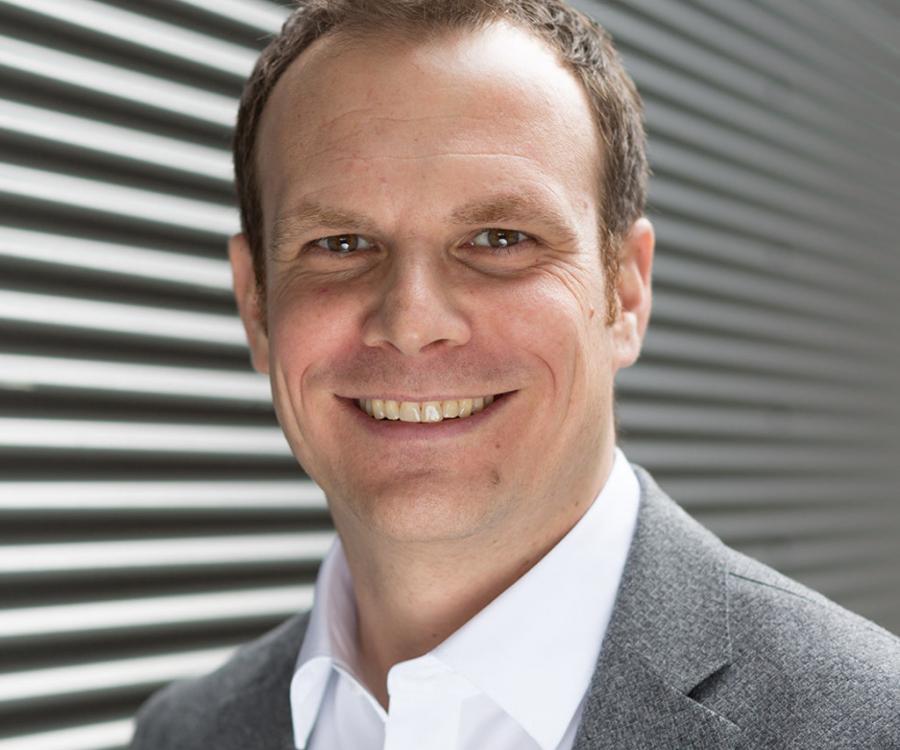Like hardly any other industry, the retail sector is being exposed to the challenges of technological change. On the one hand, important market shares were lost to online trading, and on the other hand, the online stores are now blazing their trail into the traditional branch business. While in the past mainly sub-sectors such as consumer electronics or media trade have been exposed to this trend, nowadays more and more previously largely unaffected areas such as classic supermarkets and fashion retailers are facing this challenge. And while the USA and Asia are already experimenting with new store concepts and digital innovations to encourage the digital natives to return to their local stores, most people in Germany still wait and see.

With the IoT BoxX Allgeier ES demonstrates how European retailers can respond to these challenges. In this pop-up store, Allgeier ES bundles its expertise and industry experience in the retail sector in the smallest possible space and demonstrates what the shopping experience of the future may look like. Solutions that are already feasible today as well as those that are expected to be commercially viable in the coming years are shown. The technical solutions and content approaches presented in the pop-up store can easily be transferred to other, more classic branch forms and retail concepts.
It is of great importance to us that this pop-up store does not exist in a vacuum. The various features are constantly enhanced and revised in intensive interaction with our customers and partners. We work together e.g. with well-known pharmacists, media traders or furniture store, this helps us to align the presented use cases as closely as possible to the requirements and desires of both dealers and end customers.
The technological framework of the IoT BoxX is based on two pillars: The materials management processes are implemented using an SAP S/4 HANA and SAP CAR system. The sensor technology and machine learning applications are connected via Leonardo services on the SAP Cloud Platform.
Besides, a large number of further on-premise and cloud systems are involved: From Hybris Commerce and Hybris Marketing to the SAP Data Hub and the SAP Analytics Cloud. The result is a hybrid system landscape, developed in cooperation with huawei, which shows how a future store concept may be implemented in the SAP environment.
But let's move on to the pop-up store scenarios:
Before entering, the customer identifies himself with the help of a vein scanner. In another context, this could just as easily be done via an app or equivalent. After identification, the customer is provided with an AOpen screen showing any Click & Collect orders he may have, available for pick-up in the IoT BoxX.
The heart of the mini-branch is the selection and purchase of products without time-consuming cashing or scanning processes. The products are identified by a combination of camera and RFID technology and placed in a virtual shopping basket for the customer. As soon as the customer leaves the pop-up store, he confirms the shopping basket with a click in a Fiori app and completes the purchase process.
This concept is based on the Amazon Go Store in Seattle, which offers camera-based recognition of products and direct payment using its own app. The assignment of the customers to the collected products is done by facial recognition. With the IoT BoxX, we would like to demonstrate that such a scenario is not only possible for market-dominating companies from Silicon Valley or Asia but is also becoming an attractive option for normal retailers. For both the consumer and the employee, this saves a lot of time and increases the convenience considerably.
If you wish to receive more information about the available articles, you can gain them in a simple way: by asking. A voice interface, which uses Google's Speech-to-Text API and a corresponding fuzzy logic in the S/4 system, gives the customer the answers. This not only allows article information to be retrieved, but also goods to be ordered directly: For example, the visitor can ask whether a tshirt, which is only available in size S in the mini store, can be ordered in another size. If this is the case, it can be ordered directly to your home, to the mini store or to another store.

Product and price labelling is done via Electronic Shelf Labels (ESL). We work in close collaboration with the world market leader for ESL, ses-imagotag, to demonstrate applications that go far beyond the pure mapping of standard article information and individual pricing. Thus, products with certain properties can be located directly by flashing or other optical indications. When asking the IoT BoxX "Show me vegan products" the corresponding labels flash and make it easier for the customer to find the articles. The times of lengthy searching for certain products are over. Of course, the entire process can also be used by store employees or rack jobbers. With the help of a store management app, the tasks placed there can be completed in short time.
A built-in smart mirror from Samsung is also used to communicate with the customer. It provides product recommendations based on age, gender and personal product preferences of the customer. For instance, if an item is taken off the shelf, it displays more information about the product or additional recommendations.
This gives you the freedom to choose the way you wish to interact with the range of goods available, depending on your individual preferences. Whether via voice, visually via mirror or via ESL: the IoT BoxX shows how many different possibilities the retailer can choose from depending on the branch, the products offered or the target group.
The customer's behaviour can be analyzed with the help of the digital boardroom, which is in the show case is installed at the rear side. Here, the individual customer journey can be tracked in detail In which products was the customer interested? What interaction forms did he choose? How price-sensitive was he? All these questions and more can be answered with the aid of the built-in sensors, which make the data available to the Cloud for Analytics reporting tools via the SAP Leonardo IoT Foundation.
In addition to the options described above, our IoT BoxX contains many more applications: from the integration of a hybris web shop and digital signage with PRESTIGE Enterprise, to the support of store employees through augmented reality.
If you wish to experience all this live and talk to us about use cases, feel free to contact us! We are mor than happy to answer all your questions.










